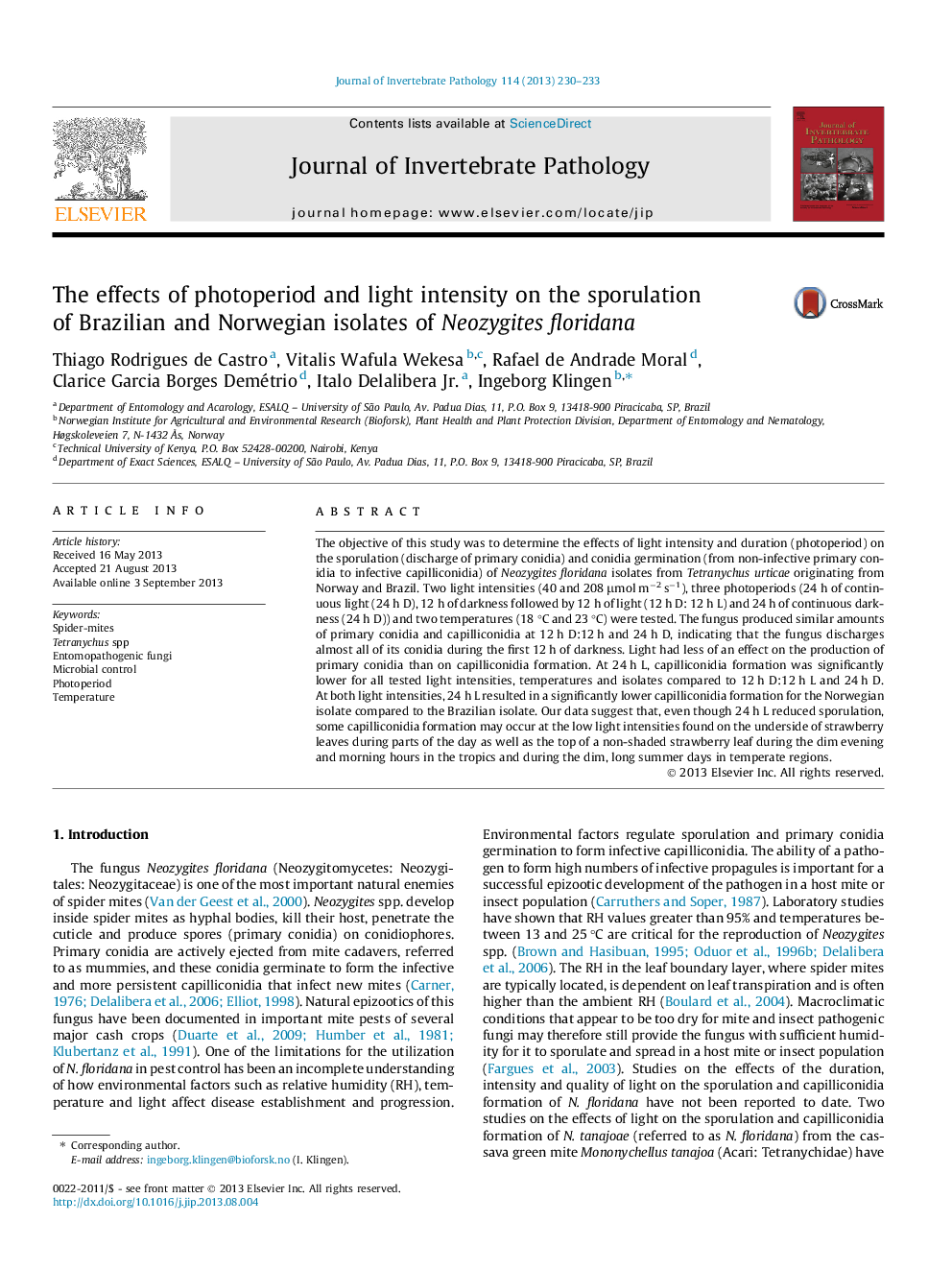| کد مقاله | کد نشریه | سال انتشار | مقاله انگلیسی | نسخه تمام متن |
|---|---|---|---|---|
| 4557751 | 1329896 | 2013 | 4 صفحه PDF | دانلود رایگان |

• Continuous light inhibits the sporulation of Neozygites floridana.
• Light had less of an effect on production of primary conidia than on capilliconidia.
• The effect was stronger for the Norwegian compared to the Brazilian isolate.
• The fungus discharged almost all of its conidia during the first 12 h of darkness.
The objective of this study was to determine the effects of light intensity and duration (photoperiod) on the sporulation (discharge of primary conidia) and conidia germination (from non-infective primary conidia to infective capilliconidia) of Neozygites floridana isolates from Tetranychus urticae originating from Norway and Brazil. Two light intensities (40 and 208 μmol m−2 s−1), three photoperiods (24 h of continuous light (24 h D), 12 h of darkness followed by 12 h of light (12 h D: 12 h L) and 24 h of continuous darkness (24 h D)) and two temperatures (18 °C and 23 °C) were tested. The fungus produced similar amounts of primary conidia and capilliconidia at 12 h D:12 h and 24 h D, indicating that the fungus discharges almost all of its conidia during the first 12 h of darkness. Light had less of an effect on the production of primary conidia than on capilliconidia formation. At 24 h L, capilliconidia formation was significantly lower for all tested light intensities, temperatures and isolates compared to 12 h D:12 h L and 24 h D. At both light intensities, 24 h L resulted in a significantly lower capilliconidia formation for the Norwegian isolate compared to the Brazilian isolate. Our data suggest that, even though 24 h L reduced sporulation, some capilliconidia formation may occur at the low light intensities found on the underside of strawberry leaves during parts of the day as well as the top of a non-shaded strawberry leaf during the dim evening and morning hours in the tropics and during the dim, long summer days in temperate regions.
Figure optionsDownload as PowerPoint slide
Journal: Journal of Invertebrate Pathology - Volume 114, Issue 3, November 2013, Pages 230–233